ICYMI: Highlights from the week that was August 24 – August 31, 2019
No one can keep up with everything, so let us do it for you. We’ll gather the top Smithsonian stories from across the country and around the world each week so you’ll never be at a loss for conversation around the water cooler.
Blood-sucking leeches, death stars and pandas (of course, it’s always about pandas)—just another week at the Smithsonian.

Art and Design
A History of Holocaust Denial Comes Under Scrutiny in The Evidence Room
The Hirshhorn Museum exhibition, filled with reproductions and plaster casts of the Auschwitz-Birkenau concentration camp, works through the wounds and scars of a gruesome history.
Hyperallergic, August 28

Interior perspective of The Evidence Room (image courtesy the Hirshhorn Museum, photo by Fred Hunsberger, University of Waterloo School of Architecture)
In 1996, a Holocaust denier sued a Holocaust scholar for libel. More than a half-century after the end of World War II, the British author David Irving had devoted himself to obfuscating the Nazi genocide of some six million Jews in an antisemitic and often racist effort to retroactively exonerate Adolf Hitler’s regime from one of the worst war crimes in recorded history. Through his lawsuit, Irving attacked the American historian Deborah Lipstadt and her publisher for characterizing him as a falsifier and bigot who manipulated evidence of Germany’s killings in one of her books. And because the burden of proof for British libel cases lies with the accused, Lipstadt and her lawyers were tasked with proving that Irving had lied about the Holocaust. Read more.
The Hirshhorn Museum Asked Artists About Their Influences. Amy Sherald Chose Deborah Roberts, Jordan Casteel Selected Faith Ringgold
Culture Type, August 25

From left, Amy Sherald. | Courtesy the artist; Jordan Casteel. | Photo by David Schulze
FOR ITS FIFTH ANNUAL GALA in New York, the Smithsonian’s Hirshhorn Museum and Sculpture Garden is paying tribute to 42 artists, an “intergenerational vanguard” including Jordan Casteel, Faith Ringgold, Amy Sherald, Deborah Roberts, and David Hartt.
The museum is assembling the group by inviting 21 artists to identify an additional honoree who “has influenced their thinking.” Sherald chose Roberts; Casteel selected Ringgold; and photographer Christopher Williams reached out to Hartt. The five African American artists being recognized at the Artist x Artist gala are experiencing new levels of growth and recognition. Read more.
Secretary Bunch
Lonnie Bunch, the Smithsonian’s first black leader, on the challenge of making it ‘a place that matters’
The Washington Post, August 30
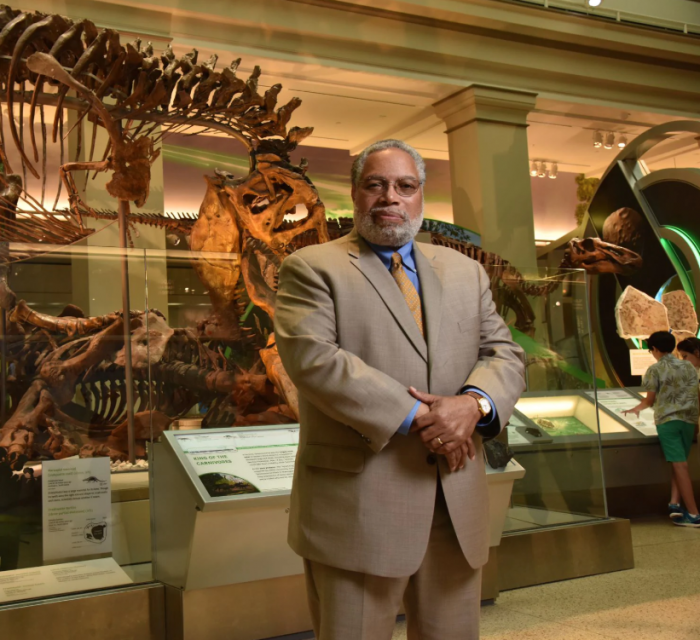
Lonnie Bunch III, is the 14th secretary of the Smithsonian Institution. He is also the founding director of the National Museum of African American History and Culture. He was photographed in Fossil Hall of the National Museum of Natural History in Washington. (Marvin Joseph/The Washington Post)
He has a reputation as an affable storyteller and a leader with the smarts of a professor and the demeanor of your next door neighbor. So there was little doubt that Lonnie Bunch III would be a new kind of leader for the Smithsonian Institution.
But would he be open to questions? Even this early in his tenure? Read more.
History, Culture and Education
The impact of 400 years since slavery arrived on U.S. soil (Opinion)
The Cleveland Plain Dealer, August 29

On the 400th anniversary of colonial and U.S. slavery, the Editorial Board Roundtable looks at the ramifications of the 246 years of slavery and of the discrimination, mistreatment and marginalization that followed. One result: It took more than 150 years after the Civil War, until this year, for the names of 107 U.S. Colored Troops from Cuyahoga County who fought in the Civil War to be recognized and added to the Roll of Honor at the Soldiers’ and Sailors’ Monument on Public Square in Cleveland. (Lisa DeJong/The Plain Dealer)
In August 1619, a Jamestown, Virginia colonist wrote, a “Dutch man of war” arrived with “not anything but 20 and odd Negroes, which the governor and cape merchant bought for victuals.” So began the institution of slavery in what was to become the United States.
The anecdote is told in a powerful New York Times article about this month’s 400th anniversary of the arrival of slavery on U.S. soil, an article titled, in part, “most Americans still don’t know the full story of slavery.” The article tells that story through artifacts and documents housed in the new National Museum of African American History and Culture in Washington, D.C., that reveal slavery’s reality in brutal, graphic terms. Read more.
Ava DuVernay’s star-studded new film is free to watch at home right now (but only today)
‘August 28,’ commissioned by Smithsonian’s National Museum of African-American History and Culture, will be available to watch at the museum in September, but you can watch at home right now.
Fast Company, August 28
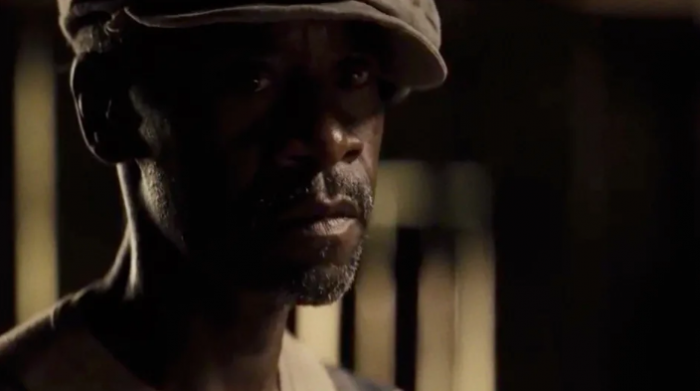
What: August 28: A Day in the Life of a People, a 22-minute film about six significant events in African-American history.
Who: Filmmaker Ava DuVernay and stars Don Cheadle, Regina King, Angela Bassett, Gugu Mbatha-Raw, Lupita Nyong’o, David Oyelowo, and Michael Ealy. Read more.
You Can Visit 1,500 Museums for Free Across All 50 States This September
Travel & Leisure, August 17
A museum visit can be interesting, enriching and exciting. It can also be expensive.
But on Saturday, Sept. 21, more than 1,500 museums in all 50 states will open their doors allowing people to enter for free as part of the 15th annual Museum Day, hosted each year by the Smithsonian magazine. Read more.
Science and Technology
‘Air Disasters’: Smithsonian Channel’s hit has a recipe of compelling stories
The Los Angeles Times, August 30
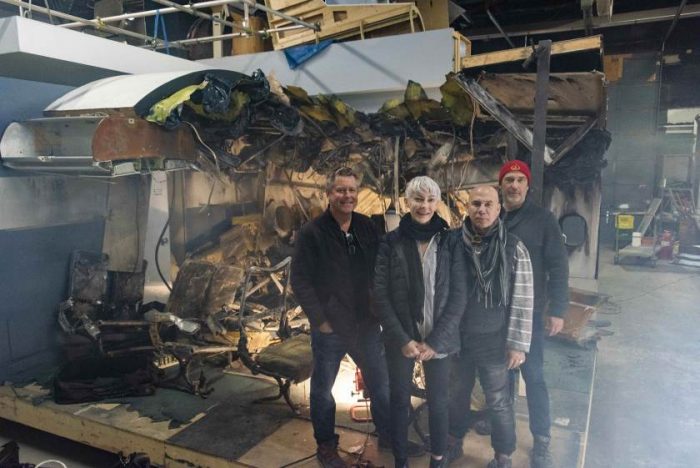
Director Tim Wolochatiuk, left, line producer Lana Pitkin, production designer Ricardo Barcelo and cinematographer James Griffith stand before a charred cabin set in the “Air Disasters” studio in Toronto.(David A. Lee)
The long-running docudrama series “Air Disasters” chooses its catastrophes carefully.
In the latest season of the Smithsonian Channel series, which premieres Sunday, a Cathay Pacific Airbus A-330 experiences double engine failure over the South China Sea, the pilot of a modified World War II P-51 Mustang fighter plane crashes into the crowd at the Reno Air Races, and a cargo DC-8 carrying a three-man crew hurtles to the ground on its final approach to the U.S. naval station in Guantanamo Bay, Cuba. Read more.
New species of bloodsucking leech with three jaws and 59 teeth found outside Washington
The Washington Post, August 27
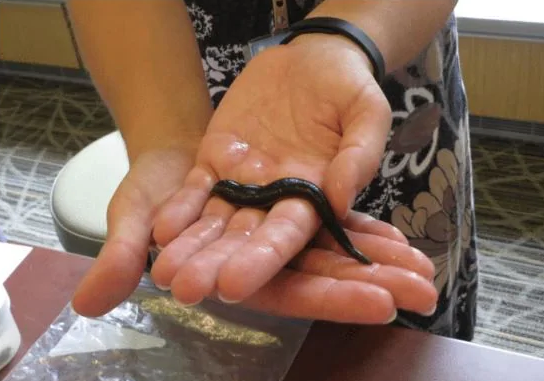
Anna Phillips, curator of parasitic worms at the National Museum of Natural History, holds a newly discovered leech. (Photo courtesy Anna Phillps)
A newly discovered bloodsucking, olive-green leech with three jaws and as many as 59 teeth has been found about 40 miles outside of downtown Washington.
A team led by a researcher at the Smithsonian’s National Museum of Natural History discovered the new species, Macrobdella mimicus, in the swamps of southern Maryland’s Charles County. It’s the first time since 1975 a new medicinal leech species has been found in North America. Read more
At the National Air and Space Museum, a New Gallery Is Being Designed To Be Hands On
From the Director of the Smithsonian’s National Air and Space Museum.
Air and Space magazine, September 2019
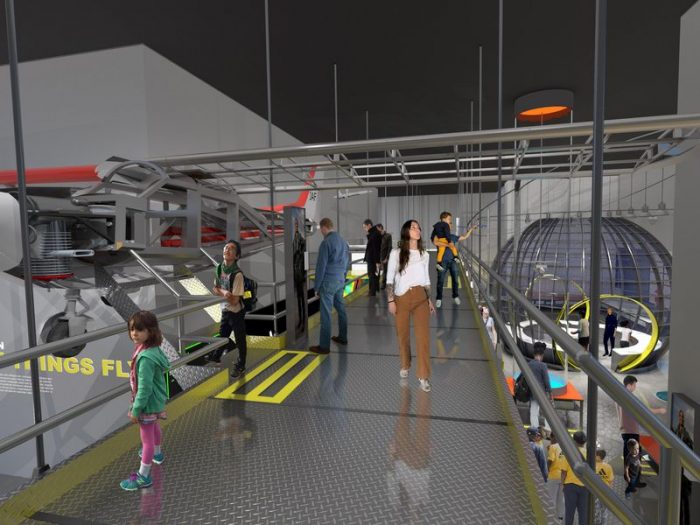
In an artist’s concept of the new How Things Fly gallery, visitors stroll and use interactive displays on a mezzanine. (NASM)
he “How Things Fly” gallery in the National Air and Space Museum is the only one dedicated exclusively to learning about STEAM subjects—Science, Technology, Engineering, Art, and Math. Staffed by experienced Museum Explainers—high school and college students who clarify and tell the stories behind the exhibits—the gallery introduces STEAM concepts through demonstrations, hands-on interactives, and design challenges. Now this gallery is about to become an even more engaging educational experience. We have recently received a $10 million gift from Textron to help us reimagine the How Things Fly gallery as part of the multi-year transformation of our Museum on the National Mall. Read more.
Astronomers have observed the longest supernova ever seen. The mysterious explosion might have annihilated its star, leaving nothing behind.
Business Insider, April 30

An artist’s concept of the SN2016iet supernova. Gemini Observatory/NSF/AURA/ illustration by Joy Pollard
A billion light-years from Earth, in a previously undiscovered galaxy, the most massive star ever known to be destroyed by a supernova explosion met its dramatic demise.
The supernova — the final explosion of a dying star — was unlike the thousands of similar explosions that scientists have seen before. It lasted longer, produced more light with more variation over time, and contained different chemicals than a regular supernova. Read more.
A 3.8-Million-Year-Old Skull Puts a New Face on a Little-Known Human Ancestor
The cranium of a male Australopithecus anamensis, a close relative of Lucy, provides clues about one of the earliest hominins to walk on two legs
Smithsonian.com, August 28
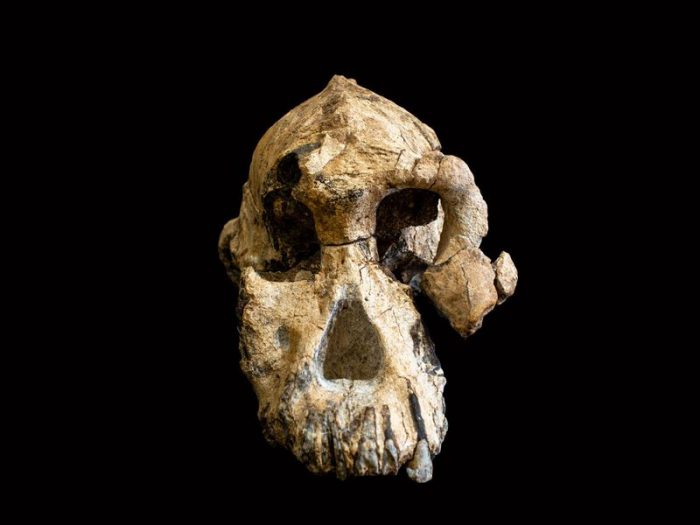
The remarkably complete skull of a human ancestor of the genus Australopithecus fills in some of the gaps in the human evolutionary tree. (Dale Omori / Cleveland Museum of Natural History)
Spotting the intact Australopithecus skull in the Ethiopian dirt caused paleoanthropologist Yohannes Haile-Selassie to literally jump for joy. “It was something that I’ve never seen before, and I’ve seen a lot of cranial fossils,” he says.
The chance discovery by Haile-Selassie and an Ethiopian shepherd has created a captivating portrait of 3.8-million-year-old face, providing an unprecedented look at a hominin species from a key stage of human evolution. Experts say the extraordinary fossil can help redefine the branches of humans’ evolutionary tree during a time when our ancestors had just evolved efficient ways to walk upright.
“This cranium looks set to become another celebrated icon of human evolution,” Fred Spoor, a human evolution researcher at the Natural History Museum in London, writes in a News & Views article that accompanied Haile-Selassie and colleagues’ new study in the journal Nature. Read more.
Various subjects
National Zoo could lose Pandas over Trump’s trade war
As President Trump continues his trade war with China, the U.S. National Zoo in Washington, D.C. could lose its most beloved attraction: the pandas, which are on loan from China.
MSNBC, August 29
Could the trade war with China cost the U.S. its pandas?
CBS News, August 29
The Smithsonian National Zoo received its first giant pandas from Beijing in 1972, and the species has been one of the zoo’s biggest draws ever since. But with President Trump’s trade war with China spiraling, could the U.S. be at risk of losing them? Read more.
OxyContin maker negotiating settlement worth a reported $12B
PBS NewsHour, August 29

Bottles of prescription painkiller OxyContin pills, made by Purdue Pharma LP sit on a counter at a local pharmacy in Provo, Utah, U.S., April 25, 2017. REUTERS/George Frey – RC18F31397F0
Purdue Pharma and the thousands of state and local governments suing the maker of OxyContin over the nation’s deadly opioid crisis are negotiating a $10 billion to $12 billion settlement under which the Sackler family would give up ownership of the company, according to published reports. Read more.
Energy, Health departments at risk for cyberattacks, OMB says
EPA, FCC, FTC also ranked as being ‘at risk,’ with email threats most prevalent
The Hill, August 23
Several large federal agencies continue to be at risk for cyberattacks even as the number of cyber incidents reported during fiscal 2018 fell compared with the previous year, the Office of Management and Budget said in a report sent to Congress on Friday.
The number of cyber incidents reported by federal agencies fell 12 percent to 31,107 during fiscal 2018 but “drawing conclusions based on this data point, particularly as agencies have adjusted to several new sets of reporting guidelines over the last few years, would be concerning,” the report said. Read more.
Posted: 4 September 2019








